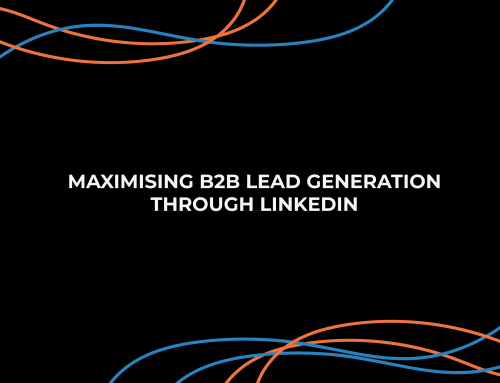Lead generation is the process through which your company attracts and converts anybody interested in your brand, goods, or services. It is essential to every consumer’s path to becoming a client.
But, is there an approach to understanding what the future has in store for us? Perhaps not in daily life, but statistics can provide a view into the future of lead generation.
Statistics are as crucial as influencers or thought leaders since they speak for the whole sector, establish trends and highlight difficulties.
This research-backed article will present 10 lead generation statistics to assist you in improving your strategy and making smarter business choices in 2022 and beyond.
Ready? Let’s get started!
General Lead Generation Statistics
Lead generation is complicated, so learn all you can about the subject. Here are some common lead-generating statistics to help you get started.
1. Lead generation is an essential marketing aim for 85% of B2B organisations. (Source: Content Marketing Institute)
There’s no denying that lead creation is important. Without considerable efforts to create leads, your company may lose out on crucial marketplaces that would bring in massive amounts of revenue, which is particularly true for B2B enterprises.
According to a Content Marketing Institute report, most organisations understand the value of lead generation. According to reports, lead generation is the most crucial marketing aim for 85 per cent of B2B companies.
2. 53% of advertisers spend nearly half of their money on lead generation. (Source: BrightTALK)
Marketers are putting their cash where their mouth is. Whether via sponsored advertising, outbound tools, or other means, it is apparent that lead generation is a critical goal for organisations.
Lead generation is so vital that just 34% spend less than half of their money on it.
3. Less than one-fifth of marketers believe that outbound techniques generate meaningful leads. (Source: Hubspot)
Outbound lead generation seems to be on its way out. Only 18% of marketers believe that outbound marketing generates the highest-quality sales leads. The days of heavy cold calling are over. It’s all about inbound lead creation now.
Lead Generation Through Content Marketing
Content marketing has become a powerful tool for organisations online, and B2B marketers are beginning to recognise this trend.
The most significant benefit is that it enables you to create relationships with prospective consumers and produce leads actively.
4. B2B organisations with blogs earn 67% more leads each month. (Demand Metric, 2019)
Blogging is one of the most dependable lead-generating content marketing techniques. SEO optimisation and content marketing assist B2B enterprises in establishing authority and increasing brand recognition. Furthermore, blog content is adaptable and may take numerous forms (text, infographics, photos, and videos), allowing it to fit into every step of the customer journey.
5. 62% of B2B companies use landing pages for lead generation.
Because B2B organisations have a greater conversion rate from their landing pages than other companies, they must design an exciting and effective page to acquire leads.
6. Content marketing creates 3x more leads than conventional marketing while costing 62% less. (Source: Demand Metric)
Content marketing is not just a solid lead-generating technique; it is also relatively inexpensive. According to Demand Metric, content marketing generates almost three times the number of leads as other conventional lead generation sources.
Furthermore, content marketing is 62% less expensive than other marketing platforms. As a result, content marketing is an excellent solution for organisations seeking more bang for their buck in lead creation.
Lead Generation through Email Marketing
It is simple to communicate with clients and prospects through email and helps you build a database of possible leads.
7. Email is seen as one of the most crucial lead-generating methods by 42% of businesses. (Source: Strategic)
Even as blogging, social networking, and video content take centre stage, email marketing remains a powerful lead-generating tool. According to the Strategic research, over half of businesses depend on email marketing for lead creation. Email is still one of the most effective marketing strategies for nurturing prospects.
8. According to 56% of marketers, captivating content at each step of the purchase process is the key to B2B email success.
Source: Authority Website Income
Respondents were asked what they believed the secret to B2B email success in a research done by Authority Website Income. ‘Compelling content at each step’ was the most common answer.
This entails sending relevant and valuable information through email at each level of the funnel, from lead creation to lead nurturing and sales.
Lead Generation Using Social Media
The corporate world has evolved.
Social media is no longer only a platform for sharing what you had for breakfast.
It is an essential component of your lead generation strategy and may assist you in driving visitors to your website, which converts into leads, customers, and sales.
9. 66% of businesses acquire leads from social media, despite spending just six hours weekly on social media. (G2, 2020)
This discovery demonstrates that you don’t have to spend much time attempting to capture the attention of prospective clients. Social media will build awareness for you, but only if your plan is powerful enough to get your desired attention.
10. LinkedIn is the most successful social media platform for generating B2B leads. (Source: Oktopost)
LinkedIn is the world’s most extensive professional social network, with over 830 million users. LinkedIn is an excellent resource for connecting and networking with new prospects for firms that sell to other enterprises.
Key Findings
Here are some of the significant findings from these statistics:
- Automation tools are essential. They are not only less expensive but also more effective than manual methods. “Work smarter, not harder,” as the saying goes.
- The power of social media, not just being present on it, but exploiting the tools and channels it provides, such as LinkedIn InMail, to establish a good B2B social selling plan, is another significant distinction.
If you’re a B2B agency wanting to extend your content marketing strategy or increase your lead-generating reach, please get in touch with us today.




